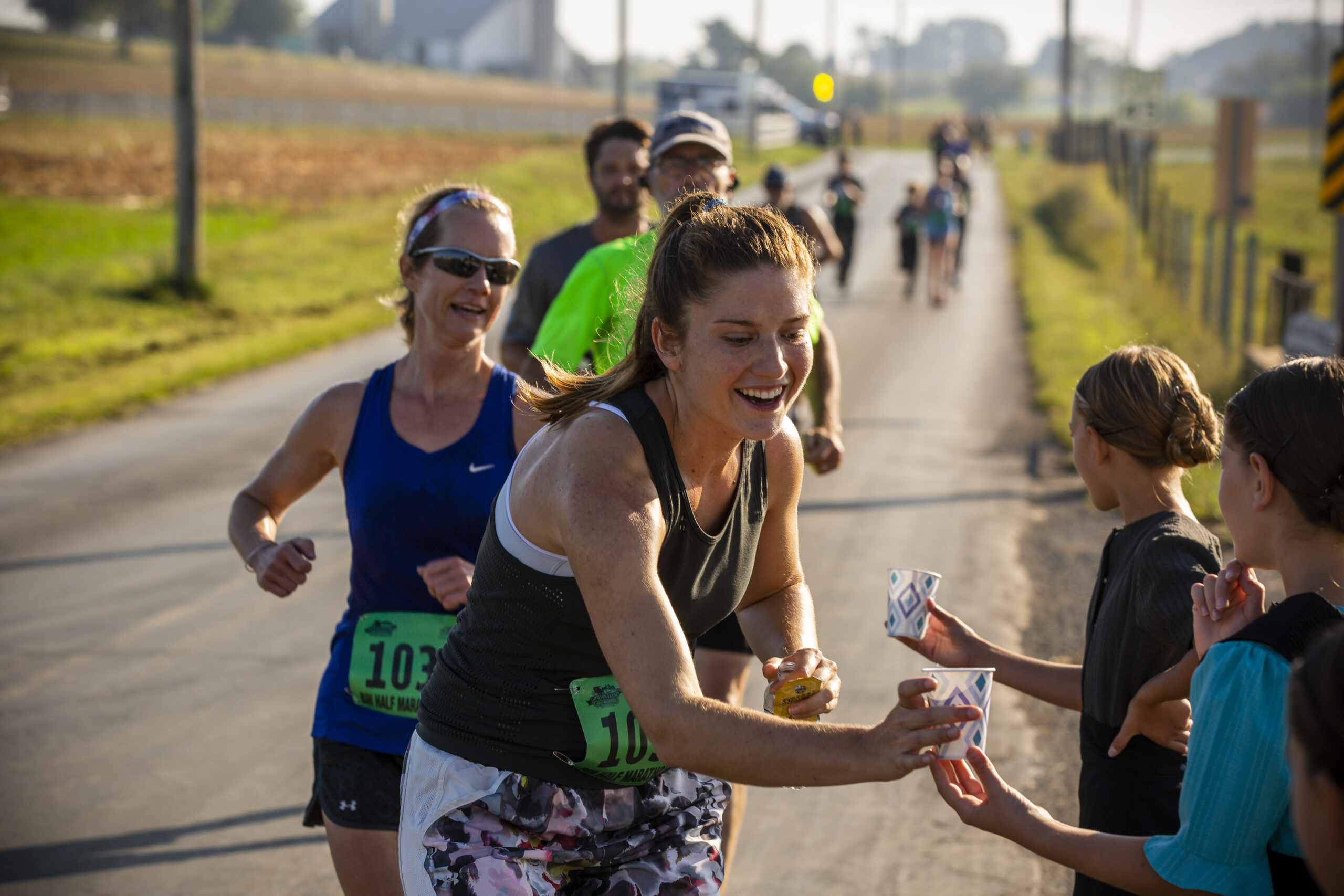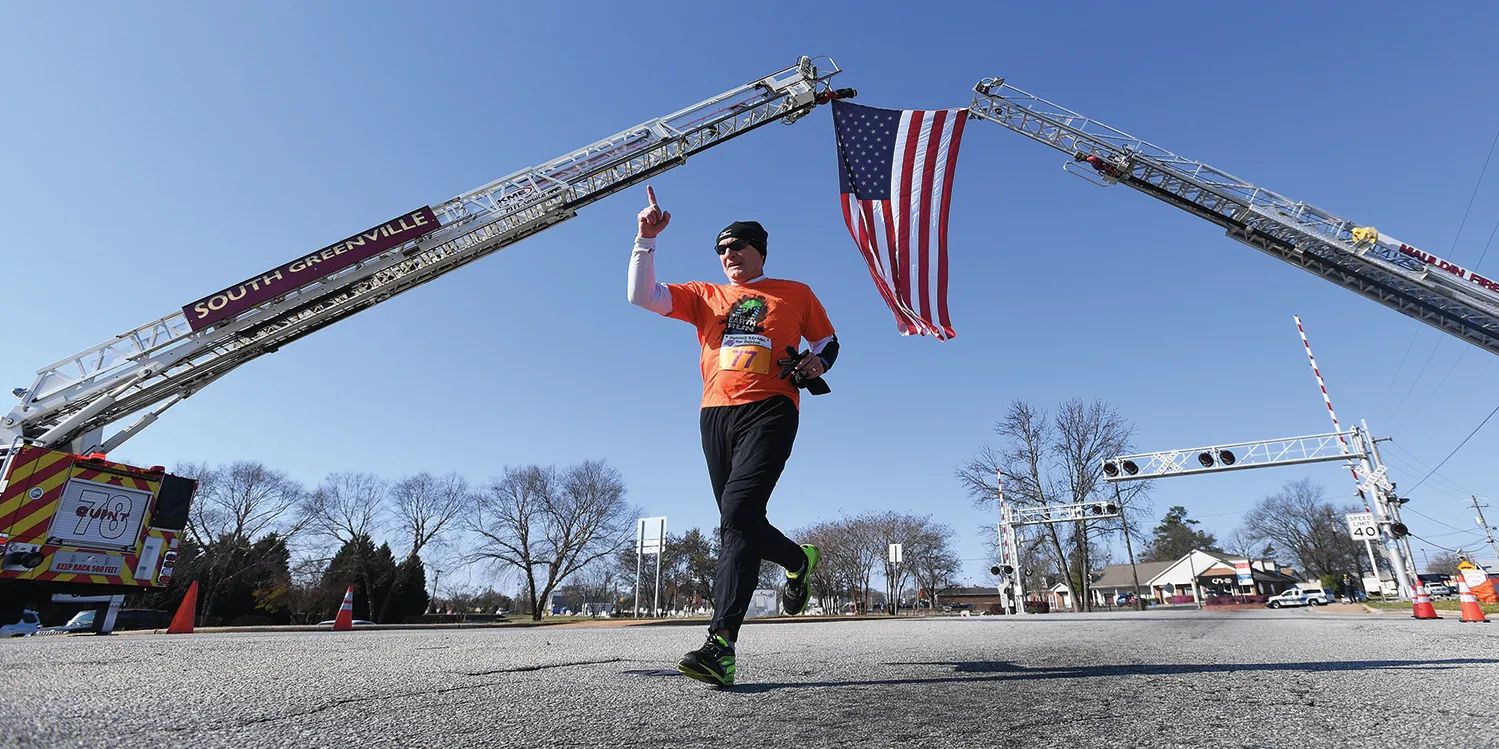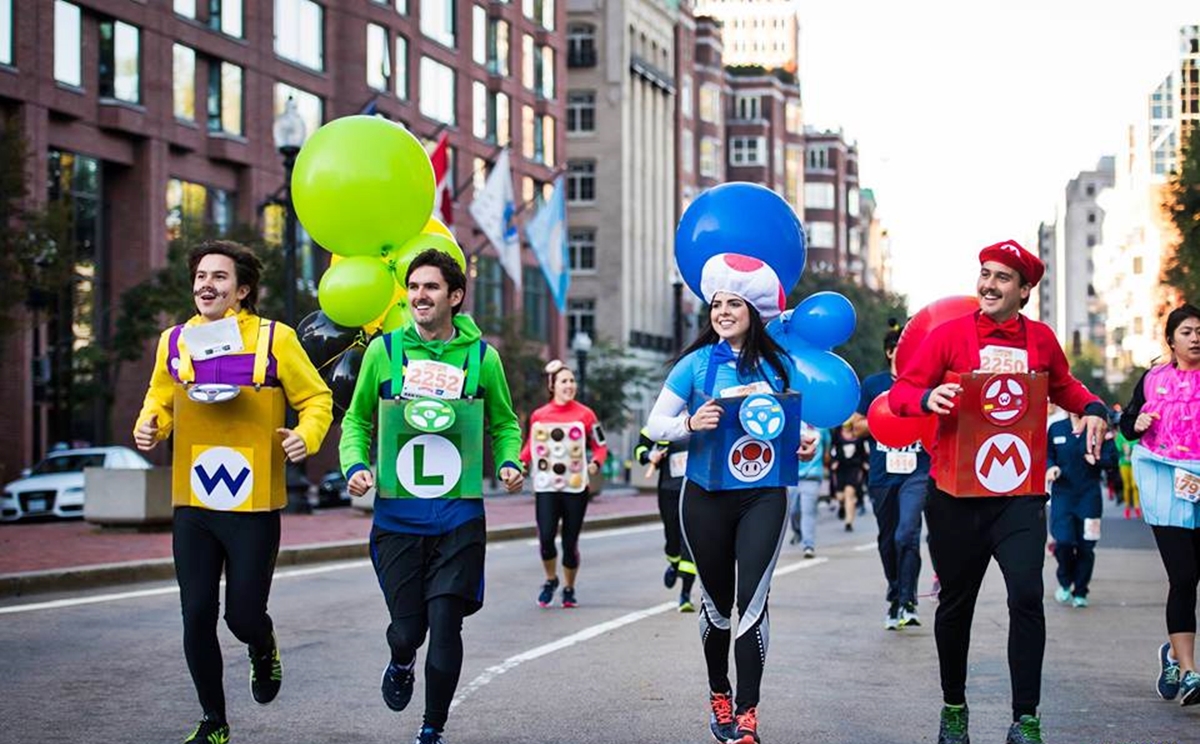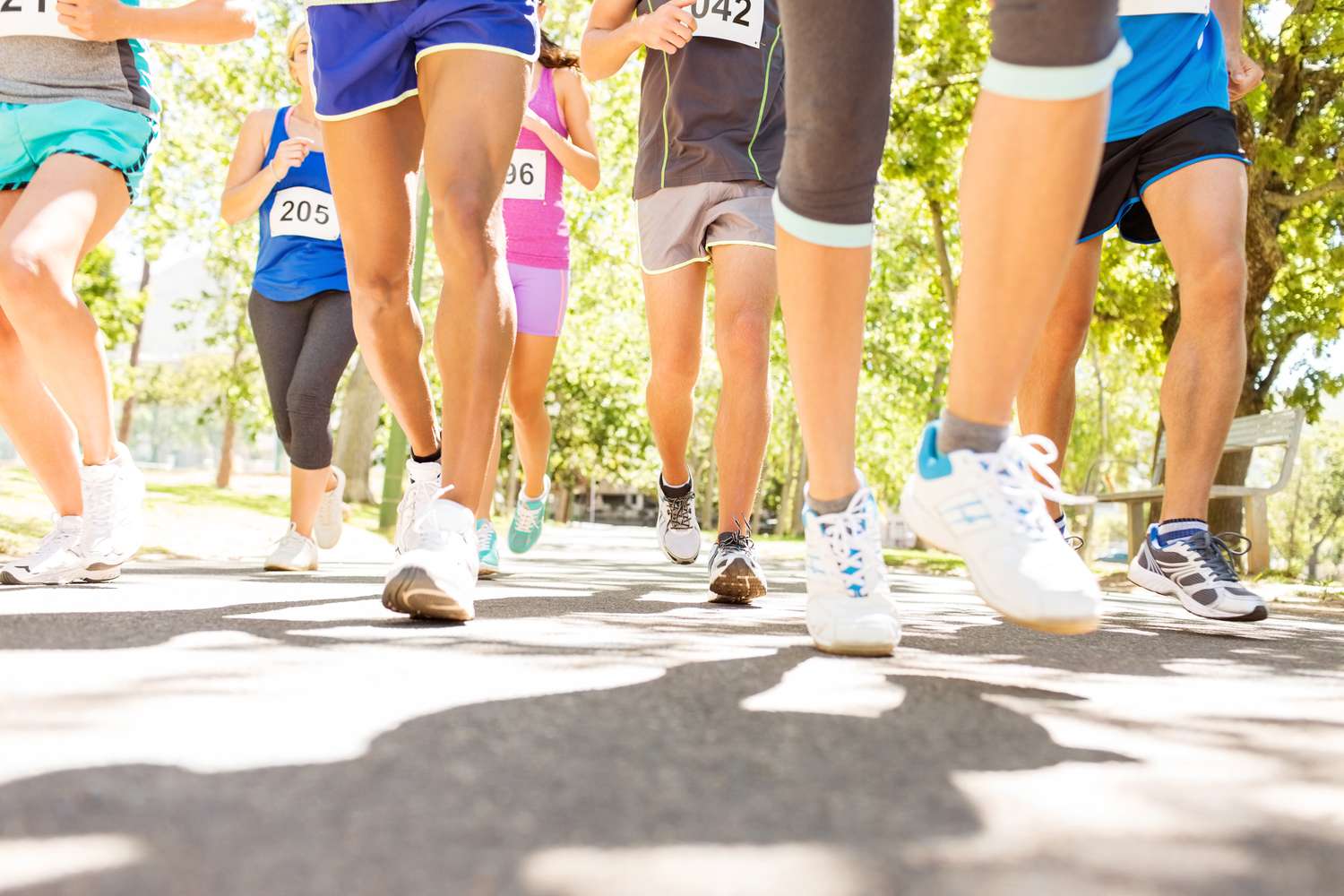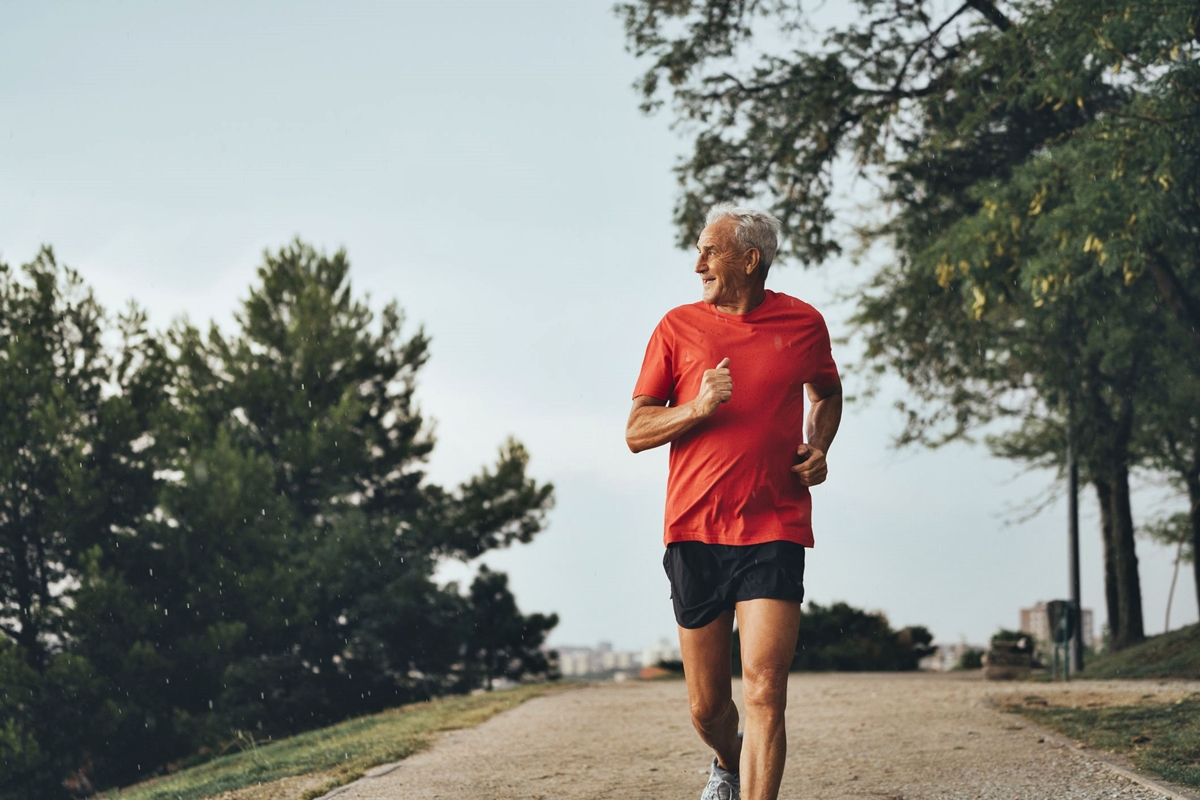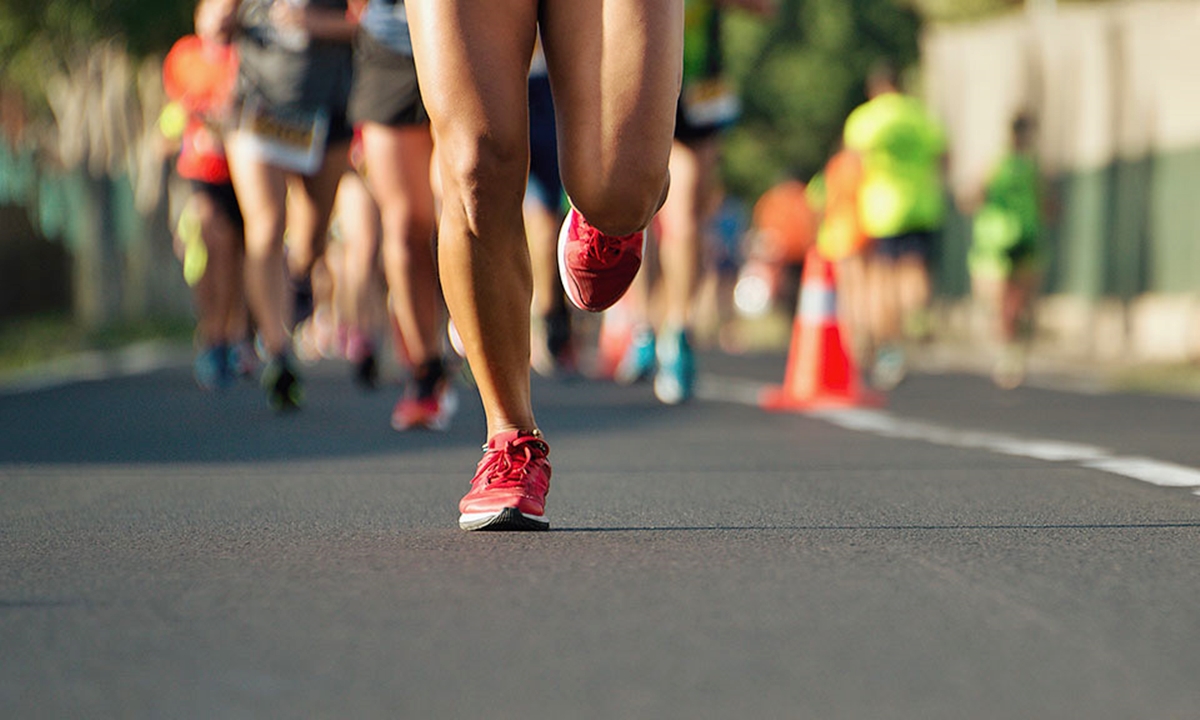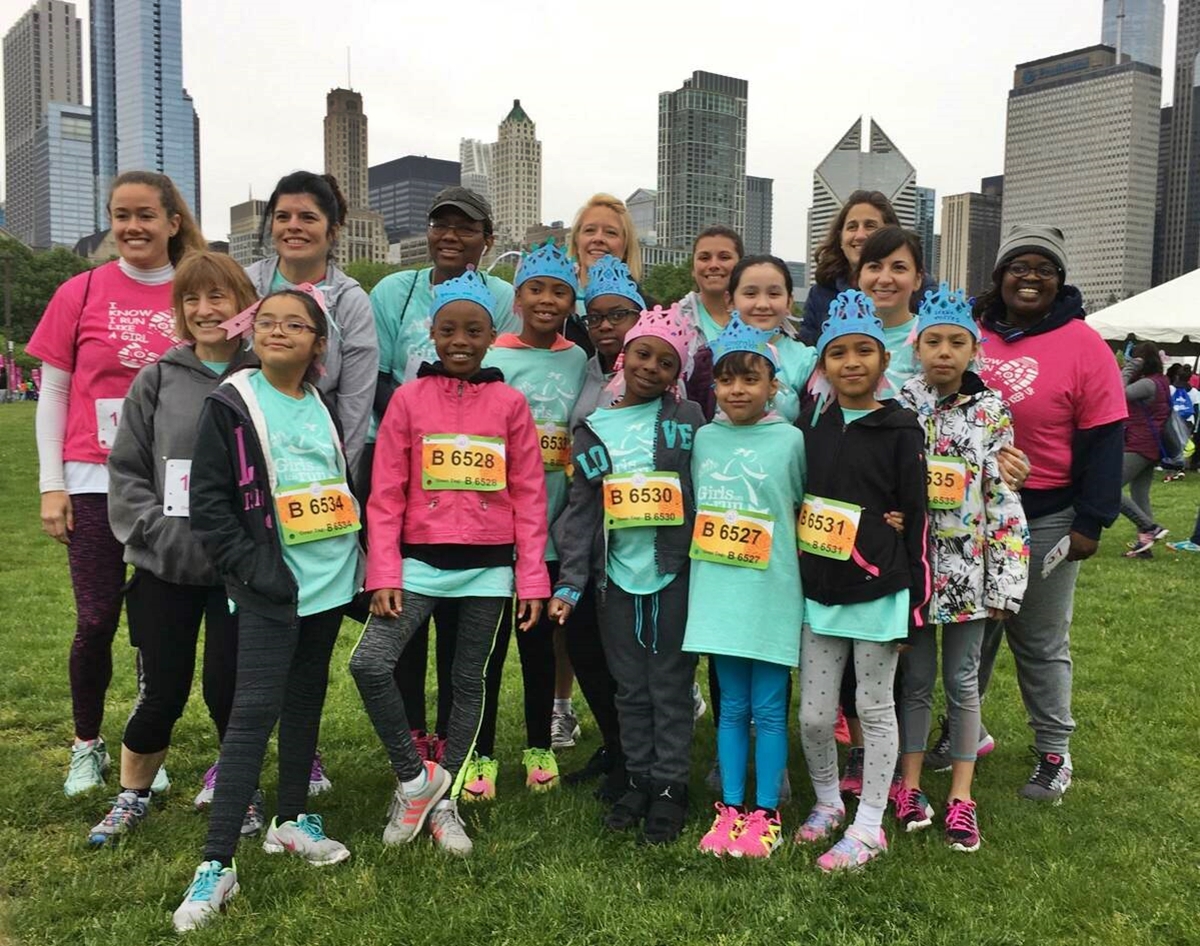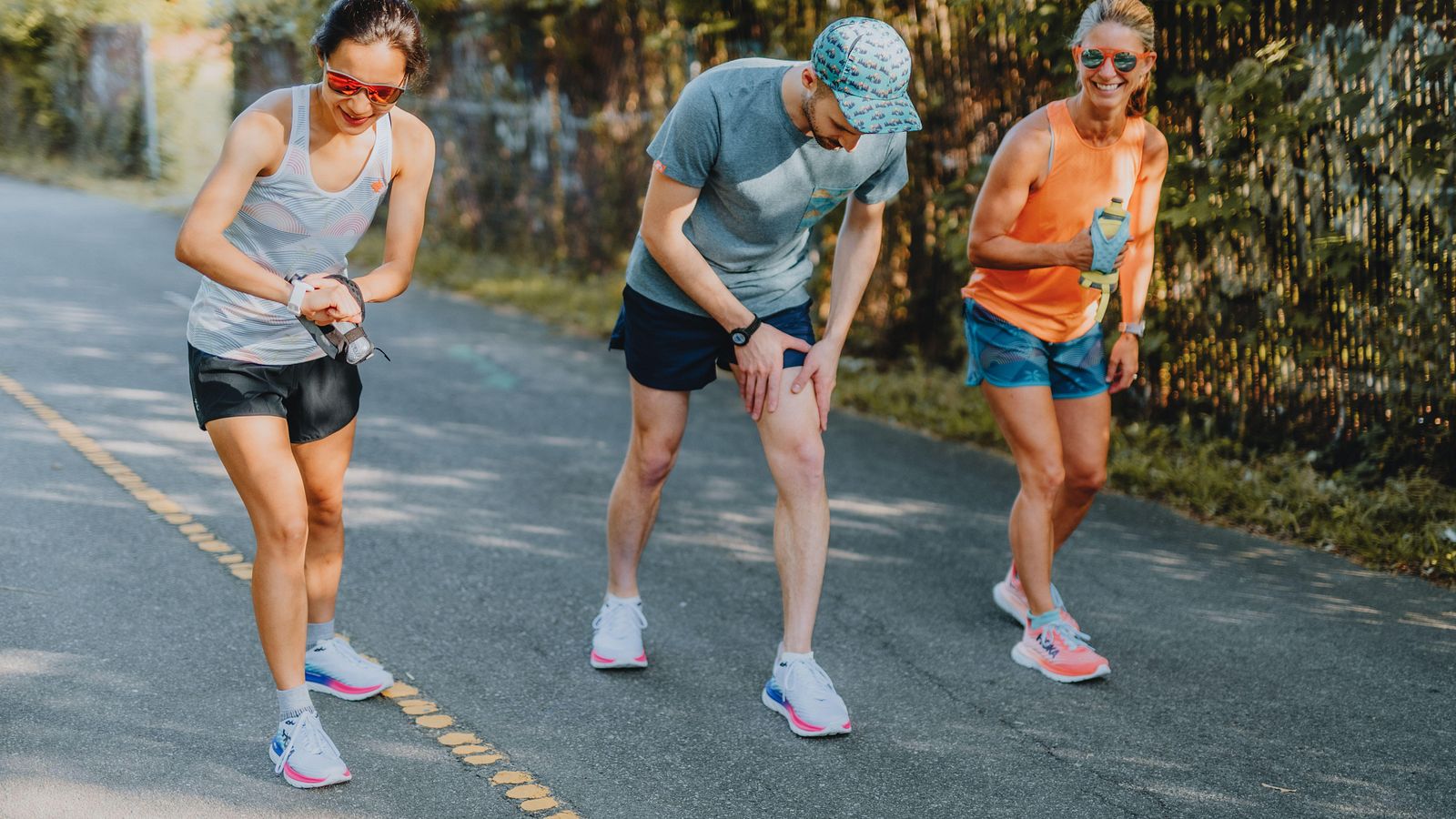

Featured
What Should I Bring For A 5K Run
Modified: January 22, 2024
Looking to participate in a featured 5K Run? Find out what essentials to bring with you for a successful race. Prepare and be ready to conquer the challenge!
5K Run: What Should I Bring
Preparing for a 5K run involves more than just lacing up your sneakers and hitting the pavement. To ensure a successful and enjoyable race, it’s crucial to pack the essential items and gear. Whether you’re a seasoned runner or participating in your first 5K, having the right items can make a significant difference in your performance and overall experience. Here’s a comprehensive list of what you should bring:
1. Running Shoes: A good pair of running shoes is essential to provide the necessary support and cushioning for your feet. Make sure your shoes are broken in and suitable for your running style.
2. Comfortable Clothing: Opt for moisture-wicking and breathable fabrics to keep you cool and dry during the race. Choose comfortable shorts or leggings and a performance-based top.
3. Socks: Invest in moisture-wicking socks to prevent blisters and keep your feet dry throughout the run.
4. Hat or Visor: Protect yourself from the sun and keep sweat out of your eyes by wearing a lightweight hat or visor.
5. Sunglasses: Shield your eyes from the sun’s glare and potential debris during the run by wearing a pair of sunglasses.
6. Sunscreen: Apply a layer of sunscreen to protect your skin from harmful UV rays, even if it’s a cloudy day.
7. Hydration Pack or Water Bottle: Staying hydrated is crucial during a 5K run. Carry a hydration pack or water bottle to replenish fluids along the way.
8. Energy Gels or Snacks: For longer races or if you need an energy boost, pack some energy gels or small, easily digestible snacks to keep you fueled throughout the run.
9. Race Bib: Don’t forget to bring your race bib, which typically includes your participant number and timing chip.
10. Cell Phone: Bringing your cell phone can be handy for safety purposes or capturing memorable moments during the race. Make sure it’s securely stored and won’t hinder your movement.
11. Optional Items: Depending on your preferences, you may consider bringing headphones, a GPS watch, running gloves, or a sweatband to enhance your running experience.
By packing these essential items and being prepared, you’ll set yourself up for success in your 5K run. Remember to check the race guidelines for any specific requirements or restrictions. Good luck and enjoy the race!
Introduction
Preparing for a 5K run can be both exciting and overwhelming, especially if you’re new to the world of running. Whether you’re participating in a charity event, aiming to beat your personal record, or simply looking for a fun way to stay active, the key to a successful and enjoyable race lies in proper preparation. From training diligently to fueling your body with the right nutrition, every aspect plays a crucial role. However, one often overlooked aspect is knowing what to bring on race day.
In this article, we will guide you through the essentials and recommended items you should bring to a 5K run. These items will not only enhance your performance but also ensure you have a comfortable and safe experience throughout the race. From the right running gear to hydration and safety supplies, we’ve got you covered with a comprehensive list.
Whether you’re a seasoned runner or participating in your first 5K, having the necessary items can make a significant difference. Not only will they provide the comfort and support needed to perform your best, but they will also help you stay prepared for any unexpected circumstances that may arise during the race.
We understand that every runner has unique preferences and needs, so we’ll provide a range of items that you can choose from based on your personal requirements. Whether you’re a minimalist who prefers to travel light or someone who likes to be thoroughly prepared for any situation, our list will cater to your needs.
So, before you hit the starting line of your next 5K race, be sure to read on and discover the must-have items that will elevate your running experience. From proper running shoes to essential safety supplies, we’ll ensure that you’re well-equipped for success. Whether it’s your first or fifteenth 5K, having the right gear will not only boost your confidence but also enable you to fully enjoy the journey towards the finish line.
Essential Items for a 5K Run
When preparing for a 5K run, there are certain items that are essential to have in order to ensure a smooth and successful race. These items will not only enhance your performance but also provide comfort and convenience throughout the run. Here are the must-have essentials for a 5K run:
1. Running Shoes: Your choice of running shoes is crucial as they provide the necessary support, cushioning, and traction for your feet. Make sure to select a pair that fits well and is suitable for your specific running style.
2. Moisture-Wicking Clothing: Opt for clothing made from moisture-wicking fabrics, such as polyester or nylon, to keep sweat away from your body and prevent discomfort. Choose lightweight and breathable materials to ensure maximum comfort.
3. Socks: Invest in good-quality running socks that are moisture-wicking and provide cushioning and support. They will help prevent blisters and keep your feet dry throughout the race.
4. Race Bib: The race bib is typically provided by the event organizers and contains your participant number and timing chip. This is an essential item that allows you to be officially recognized during the race and accurately record your time.
5. Timing Device: While some races provide timing chips along with the race bib, others may require you to use your own timing device. Make sure to have a reliable stopwatch or GPS watch to track your time and pace during the race.
6. Identification: It’s always a good idea to carry some form of identification, such as a driver’s license or ID card, in case of an emergency during the race.
7. Phone or MP3 Player: Many runners like to have their phone or MP3 player with them to listen to music or podcasts during the race. Ensure that it is securely stored and won’t hinder your movement.
8. Safety Pins or Race Belt: If the race requires you to attach your race bib to your clothing, bring safety pins to secure it. Alternatively, you can use a race belt to hold your bib without the need for pins.
9. Cash or Card: Having some money or a credit/debit card with you can come in handy for any unexpected situations, such as purchasing additional snacks or drinks, or even taking a taxi if needed.
10. Any Required Medications: If you have any specific medical conditions or require regular medication, be sure to bring them with you on your run.
By ensuring that you have these essential items with you, you will be well-prepared for a successful and enjoyable 5K run. Remember to pack them the night before the race to avoid any last-minute stress or forgetting something important. Stay tuned for the next sections where we will discuss recommended clothing, hydration and nutrition, as well as safety and first aid supplies for a 5K run.
Recommended Clothing for a 5K Run
Choosing the right clothing for a 5K run is essential for both comfort and performance. The right attire will help keep you cool, dry, and free from distractions throughout the race. Here are some recommendations for clothing that will optimize your running experience:
1. Moisture-Wicking Tops: Opt for lightweight, moisture-wicking tops that will keep sweat away from your body, allowing for better ventilation and preventing discomfort. Look for fabrics such as polyester or nylon, which help to draw moisture away from your skin.
2. Shorts or Leggings: Choose running shorts or leggings that provide the right amount of coverage and freedom of movement. Look for designs with a built-in liner or compression for added support and comfort.
3. Sports Bras: Proper support is crucial, especially for female runners. Invest in a high-quality sports bra that offers both comfort and support to minimize bounce and discomfort during the run.
4. Layering Options: Consider the weather conditions on the day of the race. If it’s chilly, layering can help regulate your body temperature. Opt for lightweight, breathable jackets or long-sleeve tops that you can easily remove or tie around your waist if you get too warm during the race.
5. Compression Gear: Compression socks or sleeves can aid in improving circulation and reducing muscle fatigue during a run. They provide support to your calves, enhance recovery, and may even help prevent injuries.
6. Reflective Gear: For races that take place in low-light conditions or at night, consider wearing clothing or accessories with reflective elements. This will increase your visibility and ensure the safety of both yourself and other runners.
7. Hat or Visor: A lightweight hat or visor can provide protection from the sun and help keep sweat out of your eyes. Look for designs made with breathable materials to ensure proper ventilation.
8. Sunglasses: Protect your eyes from glare and potential debris during the run by wearing a pair of sunglasses with UV protection.
9. Gloves: In colder weather, consider wearing a pair of lightweight running gloves to keep your hands warm while maintaining dexterity.
10. Socks: Invest in moisture-wicking socks made specifically for running. Look for designs that have padding in key areas to prevent blisters and provide extra comfort.
Remember: It’s important to try out your race day attire during your training runs to ensure a comfortable fit and minimize the chances of chafing or discomfort. Avoid wearing cotton clothing as it tends to retain moisture and can lead to irritation. Instead, opt for performance-based fabrics that offer better breathability and moisture management.
By wearing the right clothing, you’ll feel more comfortable and confident throughout the 5K run. Next, we’ll discuss the importance of hydration and nutrition for optimal performance during the race.
Hydration and Nutrition for a 5K Run
Proper hydration and nutrition are key factors in ensuring optimal performance and endurance during a 5K run. Although it’s a relatively short distance, staying hydrated and fueling your body with the right nutrients is essential for a successful race. Consider the following tips to help you hydrate and nourish yourself effectively:
Hydration:
1. Pre-Race Hydration: Start hydrating well before the race by drinking water or electrolyte-rich fluids. Aim to consume about 16-20 ounces of water 2-3 hours before the start time.
2. During the Race: Carry a water bottle or use the hydration stations provided by the race organizers to stay hydrated. Take small sips of water or sports drinks at regular intervals, especially if you’re feeling thirsty.
3. Post-Race Hydration: Replenish your fluids after the race by drinking plenty of water or electrolyte-rich fluids. Aim to consume at least 16-24 ounces of fluids within one to two hours after finishing the race.
Nutrition:
1. Pre-Race Meal: Consume a balanced meal that includes carbohydrates, protein, and a moderate amount of healthy fats. Aim to eat this meal about 2-3 hours before the race to allow for proper digestion.
2. During the Race: For a 5K run, you generally won’t need to eat solid food during the race. However, if you feel the need for an energy boost, you can carry small, easily digestible snacks such as energy gels or chews to consume along the way.
3. Post-Race Recovery: Refuel your body with a post-race meal within 1-2 hours of finishing the run. Consume a mix of carbohydrates and protein to aid in muscle repair and recovery. This can include options like a smoothie, yogurt with fruit, or a balanced meal with lean protein and whole grains.
General Tips:
1. Listen to Your Body: Everyone’s hydration and nutrition needs may differ, so pay attention to your body’s signals. Stay hydrated and eat foods that you know work well for you during your training runs.
2. Practice: Experiment with hydration and nutrition strategies during your training to find what works best for you. It’s important not to try anything new on race day to avoid any potential discomfort or digestive issues.
3. Stay Consistent: Hydration and nutrition are not just important on race day but also throughout your training. Make sure to maintain a well-balanced diet and stay properly hydrated during your training runs to support your overall performance.
By staying adequately hydrated and nourished before, during, and after the race, you’ll optimize your performance and set yourself up for success in your 5K run. Next, we’ll discuss the importance of safety and first aid supplies for a 5K run.
Safety and First Aid Supplies for a 5K Run
Prioritizing safety during a 5K run is essential to ensure a smooth and worry-free race. While most organized races have safety measures in place, it’s still important to be prepared for any unexpected situations. Here are some safety and first aid supplies to consider bringing with you on race day:
1. Identification: Carry some form of identification, such as a driver’s license or ID card, in case of an emergency during the race. This will help race organizers or medical staff to quickly identify you if needed.
2. Cell Phone: Bringing a fully charged cell phone can be a valuable safety tool. In case of emergencies or if you need to contact someone, having a phone on hand can provide peace of mind. Make sure to securely store it in an armband or running belt.
3. Extra Cash or Card: It’s a good idea to have some money or a credit/debit card with you in case of any unexpected situations where you may need to purchase items, use public transportation, or arrange for transportation if necessary.
4. Whistle: Consider carrying a whistle, especially if you’re running in an area with limited cell reception or without many spectators. A whistle can help attract attention in case of an emergency or if you need assistance.
5. Reflective Gear and Lights: If you’re running in low-light conditions or at night, wearing reflective gear and attaching lights to your clothing or accessories will increase your visibility to drivers and other runners.
6. Personal Safety Alarm: For added security, you may want to carry a personal safety alarm, especially if you’re running alone in unfamiliar areas. These small devices emit a loud noise that can help deter potential threats and attract attention.
7. Basic First Aid Kit: Pack a small, portable first aid kit with essentials such as adhesive bandages, antiseptic wipes, blister pads, and any personal medications you may need during the race.
8. Weather Protection: Depending on the weather conditions, bring appropriate gear such as a lightweight rain jacket, sunscreen, hat, or extra layers to protect yourself from the elements.
9. Know the Course: Familiarize yourself with the race course beforehand. Take note of any potential hazards, such as uneven terrain or sharp turns, and prepare accordingly. Additionally, be aware of the location of water stations and medical aid stations along the route.
10. Follow Race Guidelines: Lastly, always follow the guidelines set by the race organizers, including any safety protocols or rules. Pay attention to any pre-race briefings and be aware of any last-minute changes or announcements.
Remember, prioritizing safety during a 5K run is essential for a positive experience. By being prepared and cautious, you can minimize potential risks and focus on enjoying the race. Next, we’ll discuss some optional accessories that can enhance your 5K running experience.
Optional Accessories for a 5K Run
While the essentials for a 5K run are crucial to your performance and safety, there are also optional accessories that can enhance your overall running experience. These items are not mandatory but can provide added convenience, comfort, and motivation during the race. Consider the following optional accessories for your next 5K run:
1. Headphones: If you enjoy listening to music or podcasts while running, consider wearing headphones. Make sure to choose wireless or lightweight options that won’t hinder your movement or distract you from your surroundings.
2. GPS Watch: A GPS watch can track your distance, pace, and time, providing you with real-time feedback during the race. It’s a valuable tool for monitoring your progress and staying on track with your goals.
3. Running Belt: A running belt or waist pack can provide a practical solution for carrying small items such as keys, energy gels, or a small water bottle. Look for one with a secure and comfortable fit.
4. Race Belt: Instead of using safety pins to attach your race bib to your clothing, a race belt offers a convenient alternative. It allows you to easily and securely fasten your bib without worrying about it coming loose or causing discomfort.
5. Arm Band/Phone Holder: If you prefer to have your phone accessible during the race, consider using an armband or phone holder. This ensures your device is within reach for music, GPS tracking, or emergency situations.
6. Running Gloves: In colder weather, running gloves can keep your hands warm and protect them from the elements. Look for lightweight options that provide insulation without hindering your dexterity.
7. Sweatband or Headband: Keep sweat out of your eyes and hair in place with a sweatband or headband. Choose ones made from moisture-wicking materials to ensure they stay dry and comfortable during the race.
8. Race Medal Display: If you’re an avid runner collecting race medals, a race medal display can be a great way to showcase your achievements. Hang your medals with pride to serve as a source of motivation and inspiration.
9. Running Hat: A hat not only provides protection from the sun but can also help keep sweat off your face and eyes. Look for hats with moisture-wicking properties and breathability.
10. Running Belt or Hydration Pack: If you prefer to have your water supply easily accessible throughout the race, consider using a running belt or hydration pack. These allow you to carry water bottles or hydration bladders, ensuring you stay hydrated without interrupting your stride.
While these accessories are not necessary, they can enhance your running experience and make the race more enjoyable. Remember to consider your personal preferences and needs when deciding which optional accessories to incorporate into your 5K run routine.
Now that you’re equipped with knowledge about the essential items, recommended clothing, hydration and nutrition, safety supplies, and optional accessories, you’re ready to confidently tackle your next 5K run. Good luck and enjoy the exhilaration of crossing the finish line!
Conclusion
Preparing for a 5K run goes beyond just lacing up your shoes and hitting the pavement. By packing the essential items, wearing the right clothing, staying hydrated and fueled, prioritizing safety, and considering optional accessories, you can enhance your performance, comfort, and overall experience during the race.
When it comes to essential items, make sure you have quality running shoes, moisture-wicking clothing, comfortable socks, a race bib, and any timing devices required. These items provide the foundation for a successful run.
Choosing the right clothing is crucial for comfort and performance. Opt for moisture-wicking tops and bottoms, sports bras (for women), layering options, and gear to protect you from the sun and enhance visibility during low-light conditions.
Hydration and nutrition play vital roles in maintaining your energy and endurance. Stay hydrated with a pre-race routine, drink fluids during the race, and replenish afterward. Additionally, focus on a well-balanced pre-race meal and a post-race recovery meal.
Prioritizing safety is essential for a worry-free race. Carry identification, a cell phone, and any necessary medications. Consider reflective gear, whistles, personal safety alarms, and a basic first aid kit to be prepared for unexpected situations.
Optional accessories can provide added convenience and motivation. Consider using headphones, a GPS watch, running belts, race belts, arm bands/phone holders, running gloves, sweatbands, race medal displays, running hats, and hydration packs.
Remember, the choices you make leading up to and during the 5K run will impact your overall experience. Take the time to prepare, practice, and listen to your body’s needs. By doing so, you can optimize your performance, stay comfortable, and enjoy the exhilaration of crossing the finish line.
Now that you’re equipped with the knowledge of what to bring to a 5K run, it’s time to lace up, set your goals, and enjoy the incredible journey of participating in a 5K race. Happy running!
